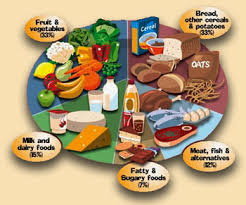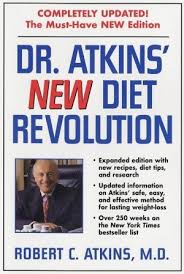Hi Everyone,
So Today I wanted to share some of the stuff that's going on in the "DIET" world...
Every week more and more diets come out..I remember when I became a Level2 Certified Sports Nutrition Coach there were something like 35,000 diets.. CRAZY..
So here are some of the latest for 2011
#1, Volumetrics
 The Trick
The Trick: Lots of water in everything you eat
Pioneered by nutritionist Dr. Barbara J. Rolls, who co-authored
The Volumetrics Weight-Control Plan with journalist Robert A. Barnett in 2000, the Volumetrics diet focuses on eating foods that have high water content to promote the feeling of satiety and combat feelings of hunger and deprivation. Foods such as soup and non-starchy vegetables are favored over calorie-dense foods like chips and cookies. "It's not a gimmick where you're giving up a whole food group," says Rolls. It teaches people to "eat for optimal health and eat what they should be eating."
Breakdown:
6-month attrition rate (n/a),
6-month mean weight loss (19.6 lbs.)
12-month attrition rate (27%)
12-month mean weight loss (17.4 lbs.)
12-month BMI decrease (2.9),
Nutrition score (n/a),
Clinical study (
American Journal of Clinical Nutrition, June 2007)
#2, Low-fat diet
 The Trick
The Trick: Plenty of fat-free and low-fat foods
In a 2008 clinical study, researchers studied a diet based on the guidelines of the American Heart Association, in which a limit of 30 percent of calories comes from fat, 10 percent comes from saturated fat and 300 mg of cholesterol. The regimen is designed to reduce the risk for heart disease and stroke. When participants stuck to the diet with a limit of 1,500 calories per day for women or 1,800 cals/day for men, the diet produced the second highest short-term weight loss and the lowest short-term attrition rate among the clinical studies included in the rankings.
Breakdown:
6-month mean attrition rate (2%)
6-month mean weight loss (12.9 lbs.)
12-month mean attrition rate (6%)
12-month mean weight loss (11.3 lbs.)
12-month BMI decrease (1.0)
Nutrition score (n/a)
Clinical studies:
The New England Journal of Medicine, July 2008,
Annals of Internal Medicine, August 2010
#3, Weight Watchers
 The Trick
The Trick: Every calorie counts, plus weekly meetings and/or online support
In 2008, consumers spent more than $4 billion on Weight Watchers services and products, according to the company, and each week 1.4 million members attend weekly meetings around the globe. The 46-year old, publicly traded company offers everything from branded pastries and frozen dinners to mobile phone applications and cookbooks, and is currently in the middle of a successful campaign with slimmed down spokesperson
Jennifer Hudson. The program
recently revamped its point system based on calorie, fat and fiber count in an attempt to simplify the complicated factors in nutrition and weight. "We're really good at translating science into a method that real people can use in their everyday lives. That really was the impetus behind the points system," says Karen Miller-Kovach, the company's chief scientific officer.
Breakdown:
6-month attrition rate (17%)
6-month mean weight loss (12.3 lbs.)
12-month attrition rate (17%)
12-month mean weight loss (11 lbs.)
12-month BMI loss (1.9)
Nutrition score (n/a)
Clinical study (
The Journal of American Medical Association, April 2003)
#4, Mediterranean diet
 The Trick
The Trick: A lot of fruits, vegetables, nuts and olive oil with very little red meat
A calorie-restrictive, Mediterranean diet with a target of 35 percent of calories from fat, primarily from olive oil and nuts, produced one of the lowest attrition rates in a 2008 study among the clinical studies that were compared for this list. The diet was based on guidelines presented in
Eat, Drink, and Be Healthy, written by the chairman of Harvard's Department of Nutrition, Walter Willett, and published in 2001, one of many books built around the Mediterranean diet pyramid that espouses a fruits, vegetables, olive oil, beans and nuts (which contain mono-unsaturated fats) as a nutritional base. The diet gained mass popularity thanks to the diet book
The Sonoma Diet, which landed on bestseller lists in 2006. Author Dr. Connie Guttersen says, "Fats like olive oil, nut butters, nuts are protective of Alzheimer's and reduce risk factors associated with gaining weight around the waist… and from a culinary standpoint, using flavorful fats means you eat more vegetables."
Breakdown:
6-month attrition rate (2%)
6-month mean weight loss (10.1 lbs.)
12-month attrition rate (4%)
12-month mean weight loss (10.4 lbs.)
12-month BMI decrease (1.5)
Nutrition score (n/a)
Clinical study (
The New England Journal of Medicine, July 2008)
#5, Atkins diet
 The Trick
The Trick: Strict limits on all carbohydrates
Dr. Robert Atkins published
Dr. Atkins' Diet Revolution in 1972, establishing what became one of the most popular diet franchises of the last decade. While the diet's popularity has waxed and waned throughout the last four decades, a generic low-carb diet has been proven to help keep the flab off once weight has been lost. The program limits dietary intake of net carbohydrates (total carbohydrates minus dietary fiber), which Atkins theorized increases one's metabolism and burns stored body fat. "When fat is used as fuel, as it is on a low-carbohydrate diet, it gets mobilized. It does not accumulate, so weight and cholesterol drop," Atkins said in 2000. (Washington Times, July 2 2000). Dr. Atkins started Atkins Nutritionals in 1989, producing low-carb food products for dieters and published
Dr. Atkins' New Diet Revolution three years later. The book and its predecessor sold a combined 18 million copies in the U.S. By 2004, a year after Atkins death, more than 9 percent of the U.S. population was on a low-carb diet and pasta sales declined 10 percent. But by the end of 2005, the fad faded and Atkins Nutritionals declared bankruptcy (it reopened in 2006).
Breakdown:
6-month mean attrition rate (7%)
6-month mean weight loss (12.1 lbs.)
12-month mean attrition rate (11%)
12-month mean weight loss (10.7 lbs.)
12-month BMI loss (1.7)
Nutrition score (42.3 out of 70 (post-induction phase)
Clinical studies:
The Journal of American Medical Association, March 2007,
Annals of Internal Medicine, August 2010
#7, Jenny Craig
 The Trick
The Trick: Packaged food and weekly check-ins
Members of the Jenny Craig program start with the company's branded food and menu plan, and then gradually wean themselves off the products as weight-loss goals progress. Jenny and Sid Craig, who formed the company in 1983 in Melbourne, created the program. There are about 500 centers in the U.S. and the average customer reportedly spends about $100 per week on Jenny Craig food while enrolled in the program. Among the diets included in the list, Jenny Craig had the highest rate of short- and long-term attrition, but ranked second in terms of total weight loss over one year.
Breakdown:
6-month attrition rate (78%)
6-month mean weight loss (12.6 lbs.)
12-month attrition rate (93%)
12-month mean weight loss (15.6 lbs.)
12-month BMI loss (n/a)
Nutrition score (n/a)
Clinical study (
International Journal of Obesity, February 2007)
#8, Ornish diet

Image: Kim Komenich, Time Life Pictures / Getty Images
The Trick: Loads of fiber, little fat and no meat, fish or alcohol
Dr. Dean Ornish is known in the medical field for his work in reversing coronary artery disease with diet, exercise, and meditation—the same approach he recommends for weight loss. In his 1993 tome,
Eat More, Weigh Less, he outlined his model for a low-fat, vegetarian diet. Centered around fruits, vegetables and legumes, only 10 percent of calories come from fats and meats, oils, nuts, and alcohol are forbidden.
Breakdown:
6-month attrition rate (15%)
6-month mean weight loss (5.3 lbs.)
12-month attrition rate (22%)
12-month mean weight loss (5.7 lbs.)
12-month BMI loss (0.8)
Nutrition score (64.6 out of 70)
Clinical study: (
The Journal of American Medical Association, March 2007)
#9, LEARN diet
 The Trick
The Trick: Low-fat diet with exercise and learning to change relationship with food
An acronym for lifestyle, exercise, attitudes, relationships and nutrition, the LEARN diet was created by Dr. Kelly Brownell. The diet is a low-fat regimen, with 55-60 percent of calories from carbohydrates and less than 10 percent from saturated fat. One of the more outspoken dietitians, Brownell gained attention in 1994 for suggesting via an
Op-Ed in The New York Times that "since the government controls cigarette and alcohol advertising aimed at children, a similar rationale should apply to unhealthy foods," a proposition later dubbed the "Twinkie tax."
Breakdown:
6-month attrition rate (20%)
6-month mean weight loss (7.1 lbs.)
12-month attrition rate (23%)
12-month mean weight loss (4.9 lbs.)
12-month BMI loss (0.9)
Nutrition score (n/a)
Clinical study (
The Journal of American Medical Association, March 2007)
#10, Zone Diet
 The Trick
The Trick: Perfecting the balance between carbs, fat and protein and strict portion control
The Zone Diet focuses on a ratio of carbohydrates (40 percent), fat (30 percent) and proteins (30 percent), which creator Dr. Barry Sears claims regulates blood-sugar levels. Sears' book landed on the bestseller lists in 1995 and versions have sold more than 4 million copies. Among the diets on our list, the Zone Diet produced the least amount of weight loss in the long and short term.
Breakdown:
6-month attrition rate (16%)
6-month mean weight loss (4.4 lbs.)
12-month attrition rate (23%)
12-month mean weight loss (3.5 lbs.)
12-month BMI loss (0.5)
Nutrition score (49.8 out of 70)
Clinical study (
The Journal of American Medical Association, March 2007)
Well with that being said..
There sure is a lot of "DIET" info out there..
The truth is when you start a new meal plan, you need to stick to it.
It need to work, and you need to see results..PERIOD.
LEAVE YOUR COMMENT BELOW










 we do to put in our products this is why. For example our Prograde Metabolism was built from research just like this. When you look at the ingredients label you will see we included choline, methionine and inositol. We call it the Ultra CID Blend and this is our proprietary lipotropic blend.
we do to put in our products this is why. For example our Prograde Metabolism was built from research just like this. When you look at the ingredients label you will see we included choline, methionine and inositol. We call it the Ultra CID Blend and this is our proprietary lipotropic blend. 
















